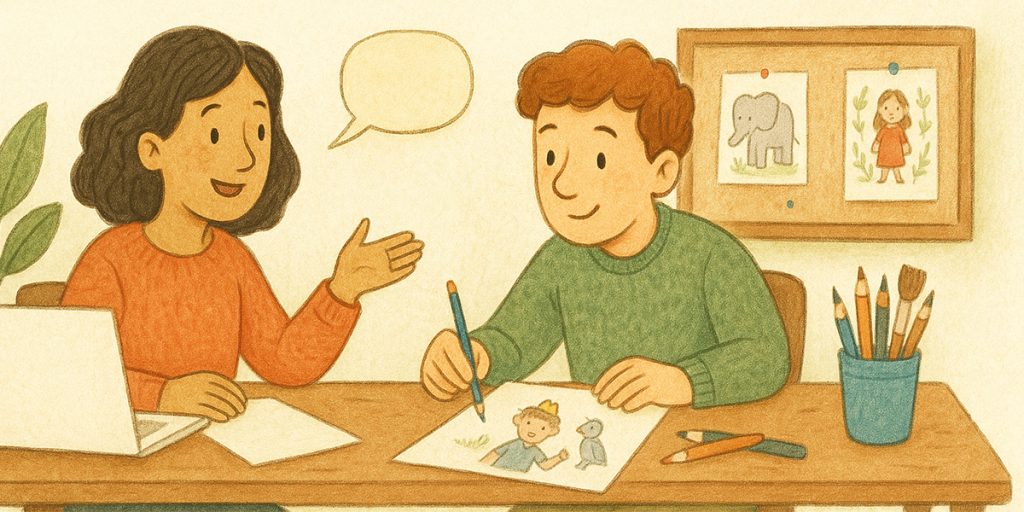Every great story has something in common a character who changes. Whether it’s a timid child discovering courage or a villain learning compassion, transformation is what makes readers care. This journey of growth is called a character arc, and it’s one of the most powerful storytelling tools in both writing and illustration.
In children’s books especially, character arcs help young readers connect with emotions, values, and life lessons in a relatable way. Let’s explore how to turn your flat characters into dynamic ones that leap off the page and live in readers’ hearts long after the story ends.
1. What Is a Character Arc?
A character arc is the emotional and psychological journey a character experiences throughout a story. It’s how they change—or sometimes fail to change—based on the challenges they face.
At its core, the arc answers one question: How does this story transform the character?
For example, in The Lion King, Simba evolves from a carefree cub into a responsible leader. In Finding Nemo, Marlin learns to let go of his fear and trust the world again. These changes don’t just move the plot forward—they give the story meaning.
Without a character arc, stories feel flat. The events may be interesting, but readers won’t feel emotionally invested.
2. Flat vs. Dynamic Characters
Flat characters are static—they stay the same from beginning to end. They might be entertaining or visually appealing, but they don’t grow or learn. In contrast, dynamic characters evolve. They make mistakes, learn from them, and emerge changed.
For children’s authors and illustrators, understanding this difference is essential. Flat characters may work in certain formats like board books or comedic stories, but for emotional storytelling, readers crave growth.
A flat vs dynamic characters comparison looks like this:
| Character Type | Description | Example |
| Flat Character | Simple personality, no emotional growth | A talking toy who never changes |
| Dynamic Character | Learns lessons, changes mindset, grows emotionally | A shy girl who becomes a confident explorer |
Dynamic characters are what make stories memorable and meaningful.
3. Why Character Arcs Matter in Children’s Books
Children’s literature often carries emotional and moral lessons—about friendship, honesty, courage, and kindness. A well-crafted character arc helps deliver these lessons naturally, through experience instead of instruction.
When young readers watch a character grow, they internalize those lessons without feeling lectured.
For instance:
- A selfish character learning to share teaches empathy.
- A fearful child discovering bravery inspires confidence.
- A mischievous hero understanding responsibility models maturity.
This emotional evolution mirrors a child’s real-life learning process, making the story more impactful and relatable.
4. The Three Classic Types of Character Arcs
There are three main types of character arcs in storytelling. Understanding them helps you decide what emotional path your hero—or even your villain—will take.
1. Positive Change Arc
The character overcomes flaws or fears and becomes a better version of themselves.
Example: A shy rabbit learns to stand up for friends and becomes a hero.
2. Negative Change Arc
The character gives in to fear, greed, or pride, becoming worse or more broken.
Example: A jealous friend loses everything by refusing to change.
3. Flat Arc (Static Arc)
The character remains morally strong but influences others to change.
Example: A kind-hearted fairy doesn’t change herself but helps others learn love and forgiveness.
Each arc serves a different purpose in storytelling—but even a flat arc can feel dynamic when surrounded by evolving supporting characters.
5. How to Create Believable Transformation
A strong character transformation doesn’t happen overnight—it unfolds through believable steps. Here’s a simple framework for developing believable characters:
- Establish a Flaw or Belief:
Begin with something your character must overcome—fear, pride, or doubt. - Challenge the Flaw:
Introduce events or relationships that push the character to rethink their beliefs. - Force a Choice:
Put your character in a situation where they must act differently than before. - Show Change:
The climax should reveal transformation through actions, not just words.
For example, a child afraid of water might rescue a friend from a pond at the story’s end—showing courage, not merely stating it.
This natural evolution makes your storytelling emotionally satisfying and realistic.
6. The Role of Illustrations in Showing Character Arcs
In visual storytelling, illustrations can express transformation even without words.
For example:
- At the start, your character’s posture might be slouched or timid.
- As the story progresses, they begin to stand taller, smile more, or use brighter colors in their environment.
- By the end, their confidence shines through their body language and expressions.
This is especially important in character development in children’s books, where visuals often carry as much emotional weight as text. A consistent color palette or changing lighting can mirror emotional growth beautifully.
7. Common Mistakes in Writing Character Arcs
Even experienced writers can struggle with arcs that feel rushed or forced. Here are some common pitfalls to avoid:
- Sudden transformation: Change must feel earned, not instant.
- No internal conflict: If the character doesn’t struggle, the arc feels empty.
- Lack of motivation: Readers must understand why the character changes.
- Neglecting visual cues: In illustrated books, the art must reflect emotional evolution.
A balanced combination of emotional depth and visual cues creates an authentic and satisfying arc.
8. Conclusion – Growth Is the Heart of Every Great Story
A story without growth is like a painting without color—it lacks life. When you master character arcs, you transform ordinary stories into emotional journeys that stay with readers.
By turning flat characters into dynamic ones, you teach children powerful lessons about change, empathy, and courage—without ever having to spell them out.
At The Rainbow Stories, we bring these journeys to life through thoughtful character design, expressive illustration, and storytelling that inspires transformation on every page.







